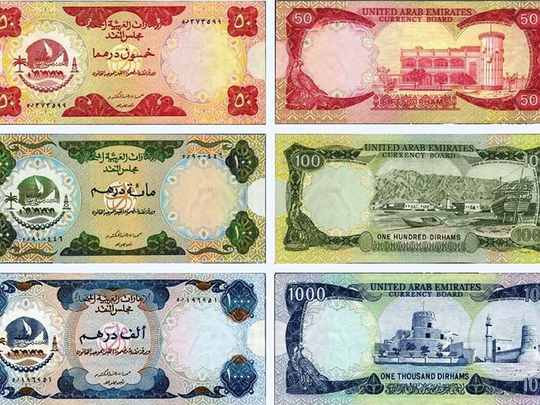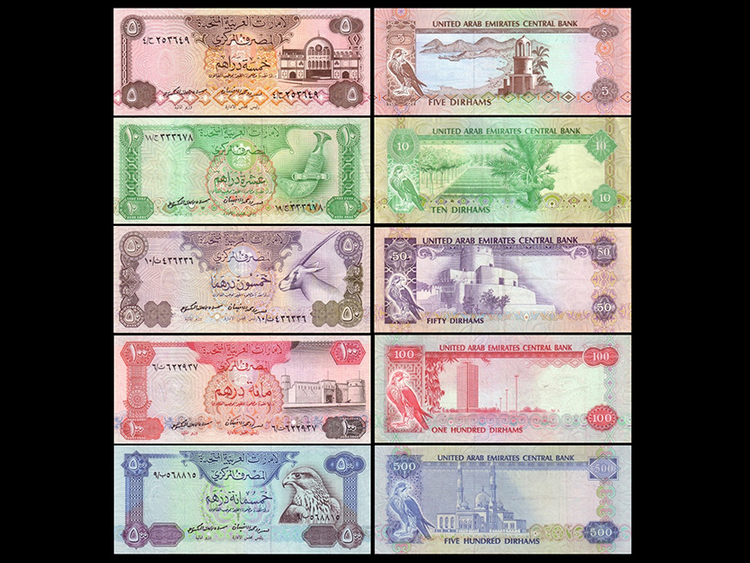
Dubai: As the UAE dirham marks its 44th birthday on May 19, the currency continues to celebrate the seven emirates after undergoing several transformations.
First released in 1973, the banknotes began their journey in denominations of 1, 5, 10, 50 and 100, displaying the watermark of an Arabian horse, which was later changed to a falcon, the national bird of UAE.
The date also marks the formation of UAE Currency Board, which issued the new notes bearing various local environmental landmarks and geographical boundaries of the UAE.
“The very first denominations were imprinted with landmarks that represented each emirate separately with the name of emirate on the bank note,” Ram Kumar, founder of Numisbing, a Dubai-based numismatics firm, said in a statement on Wednesday.
Kumar also serves as president of the International Bank Note Society, Dubai Chapter.
“For example, Dh1 carried the picture of the Clock Tower and Police Fort in Sharjah, while the Dh5 note had Fujairah’s Old Fort on it. The Dh10 note featured an aerial view of Umm Al Quwain and the Dh50 note displayed the palace of the Ajman Ruler. The Dh100 note was imprinted with a picture of Al Rams area in Ras Al Khaimah. Representations from Dubai and Abu Dhabi were introduced with Dh1,000 notes in 1976, which featured Al Jahili Fort of Abu Dhabi and an old fort in Dubai,” he said.
In December 1980, when the UAE Currency Board was replaced by the UAE Central Bank, the notes issued by currency board were slowly withdrawn from circulation. At the back of all the denominations, the names of the seven emirates were also removed and new notes with different designs and colours were introduced.
“Today, the old notes are collectibles and many Emiratis and long-time expatriates have preserved them as a part of the country’s history. A used set of UAE first issue notes from Dh1 to Dh100 are available at antique shops,” Kumar said.
Prior to the introduction of the UAE dirham, the region used several currencies including the Indian rupee, Gulf rupee, Qatari riyal, Dubai riyal and Bahraini dinar (used in Abu Dhabi) during different phases.



